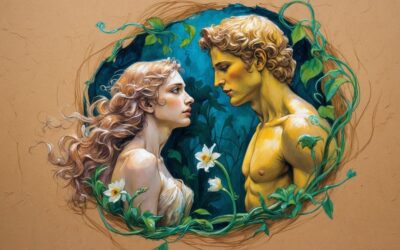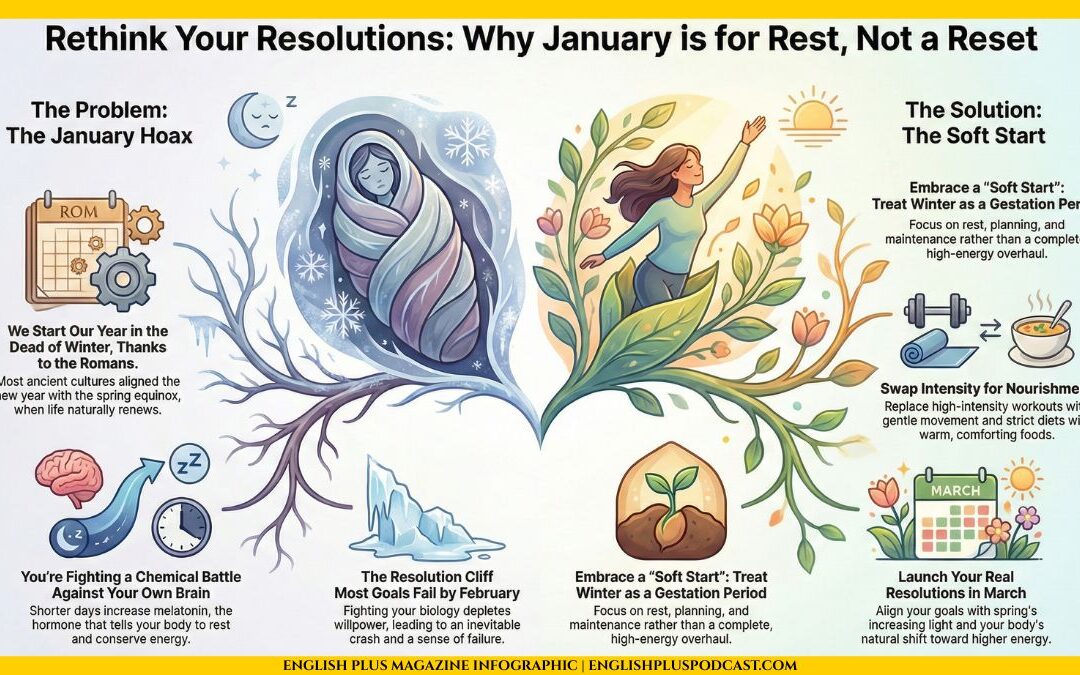The Gist
Who Is the Cailleach Beara?
The Cailleach Beara is one of the oldest and most enigmatic figures in Irish mythology. Described as a crone or hag, she embodies both the harshness and beauty of winter. Her name, “Cailleach,” translates to “old woman” or “veiled one,” a fitting title for a being cloaked in mystery and wisdom. She is said to have lived through countless lifetimes, witnessing the rise and fall of kings and the changing landscapes of Ireland.
But the Cailleach Beara is not just a figure of decay. She represents the cyclical nature of life—what dies must be reborn. Her presence reminds us that winter, though cold and barren, is necessary for the rebirth of spring. Through this duality, the Cailleach Beara teaches the importance of embracing both endings and beginnings.
The Role of the Cailleach in Nature
The Cailleach Beara is deeply connected to the natural world. In Irish folklore, she is responsible for shaping the landscape, forming mountains and rivers with her hands and breath. Some legends say she built the Beara Peninsula by dropping large boulders as she walked, leaving behind rugged beauty. The land itself is her canvas, marked by her presence as both creator and destroyer.
In many stories, the Cailleach is said to bring winter by washing her cloak in the ocean, turning the landscape cold and barren. As the seasons shift, she transforms—sometimes becoming a beautiful young woman to represent the arrival of spring, symbolizing the renewal of life after hardship. This transformation shows how even the harshest times can pave the way for new growth.
The Cailleach’s Immortality and Influence
Unlike many mythological figures, the Cailleach Beara does not stay fixed in time. She lives through cycles, constantly renewing herself. Some tales say she turns to stone when her time ends, only to awaken with the changing of the seasons. In this way, she transcends mortality, embodying the endless rhythm of nature. Stones and boulders across Ireland are often linked to her, seen as remnants of her presence or resting places until she rises again.
Her immortality isn’t just about living forever—it’s about embracing change and understanding that nothing truly ends. Life, death, and rebirth are all part of the same cycle, a lesson the Cailleach offers to those willing to listen.
Lessons from the Cailleach Beara
The Cailleach Beara holds wisdom that remains relevant today. Her story reminds us that change is inevitable, and even the darkest winters eventually give way to spring. She encourages us to see beauty in every stage of life, from youth to old age, and to embrace the transformations that shape us. In a way, the Cailleach Beara offers a spiritual blueprint for resilience—accepting that challenges and losses are not just endings but opportunities for growth.
Her duality as both creator and destroyer also teaches the importance of balance. We can’t have growth without release, just as we can’t have spring without winter. The Cailleach Beara shows us that by embracing all seasons of life, we become more connected to the natural world and to ourselves.
The Cailleach in Modern Culture
Even today, the legend of the Cailleach Beara continues to inspire. Writers, poets, and artists draw upon her story to explore themes of aging, transformation, and renewal. Her influence can also be found in local festivals and cultural traditions in Ireland, where the Cailleach is remembered during seasonal transitions. Modern interpretations often present her as a feminist symbol—an independent and wise woman who embodies strength through change.
The Beara Peninsula, named after her, remains a popular destination for those drawn to her legend. Visitors often seek out the sites linked to her, hoping to connect with the ancient stories embedded in the landscape.
Final Thoughts
The Cailleach Beara’s story is more than just an old legend—it’s a reminder that life is full of seasons, each with its own beauty and challenges. Whether we’re facing personal winters or welcoming new beginnings, the Cailleach teaches us that everything has its time. Her legend offers comfort in knowing that every ending brings the promise of renewal, just as winter always turns into spring. Embracing this cycle allows us to find peace, even in the face of uncertainty, and to walk through life with the same quiet strength as the Cailleach Beara herself.
Let’s Talk
The Cailleach Beara really makes you think, doesn’t she? This old, shape-shifting figure isn’t just some ancient myth tucked away in Irish folklore—she’s a reminder of the cycles we all go through. I mean, life isn’t just a straight road, right? It’s more like a winding path with seasons of growth, loss, rest, and renewal. The Cailleach shows up in our own lives every time something ends, forcing us to confront change, whether we’re ready for it or not. How often do we resist those “winters” in our lives, hoping they’ll just pass? And what if, instead of resisting, we leaned into those difficult moments the way she does—accepting them as part of the bigger picture?
Think about the times you’ve gone through your own winter—those moments when everything felt like it was falling apart. Maybe it was a breakup, losing a job, or even just a time when nothing seemed to go right. At the time, it probably felt like the world was frozen over, but once you got through it, wasn’t there a kind of spring waiting on the other side? Maybe it didn’t happen right away, but eventually, things thawed, and life started to bloom again. That’s the wisdom of the Cailleach Beara—understanding that every winter holds the promise of spring, even if we can’t see it yet.
And how about that idea of transforming through life’s seasons? The Cailleach doesn’t stay the same; she shifts between a crone and a young woman, just as the landscape changes around her. Isn’t that kind of like how we change too? We’re not the same people we were five or ten years ago. Maybe you’ve gone through phases where you had to let go of things—whether it was friendships that no longer fit, jobs that drained you, or even parts of yourself that you outgrew. The Cailleach teaches us that letting go isn’t a failure; it’s just part of the cycle. After all, if we hold on to everything, where’s the room for new things to grow?
It’s funny, though—we live in a world that’s obsessed with avoiding winter, metaphorically and literally. Think about how much energy we put into trying to stay young forever, clinging to the idea that aging means decline. But the Cailleach Beara says the opposite: Aging isn’t something to fear. In fact, there’s beauty and power in embracing each stage of life. What if we saw growing older not as losing something but as gaining wisdom, like she does? Maybe the wrinkles we get along the way are just the boulders we’ve collected on our personal journeys, shaping the landscapes of our lives.
There’s also something deeply comforting about the idea that the Cailleach rests, turning to stone when her time is done, only to awaken when the season changes. How often do we push ourselves to be productive all the time, as if rest isn’t part of the cycle too? Her story reminds us that rest isn’t laziness—it’s necessary. Maybe that’s the part we need to embrace the most: understanding that just as nature rests, we need to give ourselves permission to pause too. Have you ever noticed how much better things feel after you’ve taken a break, even when it felt impossible to step away at first?
So, here’s a question for you: What season of life are you in right now? Are you in the middle of a winter, waiting for things to thaw? Or maybe you’re in a spring, full of new beginnings. Whatever season you find yourself in, the Cailleach Beara’s story reminds us that no matter where we are, change is always just around the corner—and that’s not something to fear. It’s just part of the dance. And if an ancient goddess can ride those waves of change for centuries, maybe we can too.
Let’s Learn Vocabulary in Context
Exploring the story of the Cailleach Beara gave us some words and phrases that resonate beyond mythology—they’re just as relevant in everyday life. Let’s take a closer look at these terms, see how they were used, and figure out how we can apply them to our own experiences.
First up is cycle, which refers to a sequence that repeats itself. In the context of the Cailleach, it’s the continuous rhythm of life—birth, death, and rebirth. You can apply it to your life too. “I’m stuck in a cycle of working late and skipping exercise—I need to break out of it.”
Next is transformation, which means significant change. The Cailleach transforms from a crone into a young woman with the seasons, showing that change is essential. You might say, “Moving to a new city was a major transformation for me, but it helped me grow.”
Resilience is another big one. It refers to the ability to recover from challenges. Just like the Cailleach survives countless lifetimes, resilience helps us get through tough times. “She showed incredible resilience after losing her job, bouncing back stronger than ever.”
Then we have embrace, which means accepting something willingly, even when it’s challenging. The Cailleach embraces both creation and destruction. “I’ve learned to embrace change—it’s not always easy, but it opens new doors.”
Metaphor comes into play when we talk about the Cailleach as a symbol of the seasons. It means using one thing to represent another, often to make an idea clearer. “Her journey through winter and spring is a metaphor for personal growth.”
Balance is key in the Cailleach’s story, reflecting the need to navigate between opposites—like work and rest, or joy and sorrow. You might say, “I’m trying to find a better balance between work and personal time.”
Another useful word is renewal, which means starting fresh. The Cailleach’s transformation each spring is a reminder that renewal is possible for all of us. “After a long break, I felt a sense of renewal and was ready to dive into new projects.”
Endings show up in her story too. They’re a necessary part of life—just like winter makes way for spring. You could say, “The end of that relationship felt tough, but it opened the door for something new.”
We also explored the idea of season, which in this context refers to phases of life. The Cailleach teaches us that every season has its time. “I think I’m in a season of learning right now—figuring out what I want next.”
Finally, there’s wisdom, which refers to deep knowledge gained through experience. The Cailleach embodies wisdom, reminding us that age is about more than just getting older. “My grandmother’s wisdom has shaped the way I see the world.”
Here are a couple of questions to reflect on: What’s one cycle or season in your life that you’ve had to embrace, even though it was challenging? And how do you balance endings with the possibility of renewal?










0 Comments